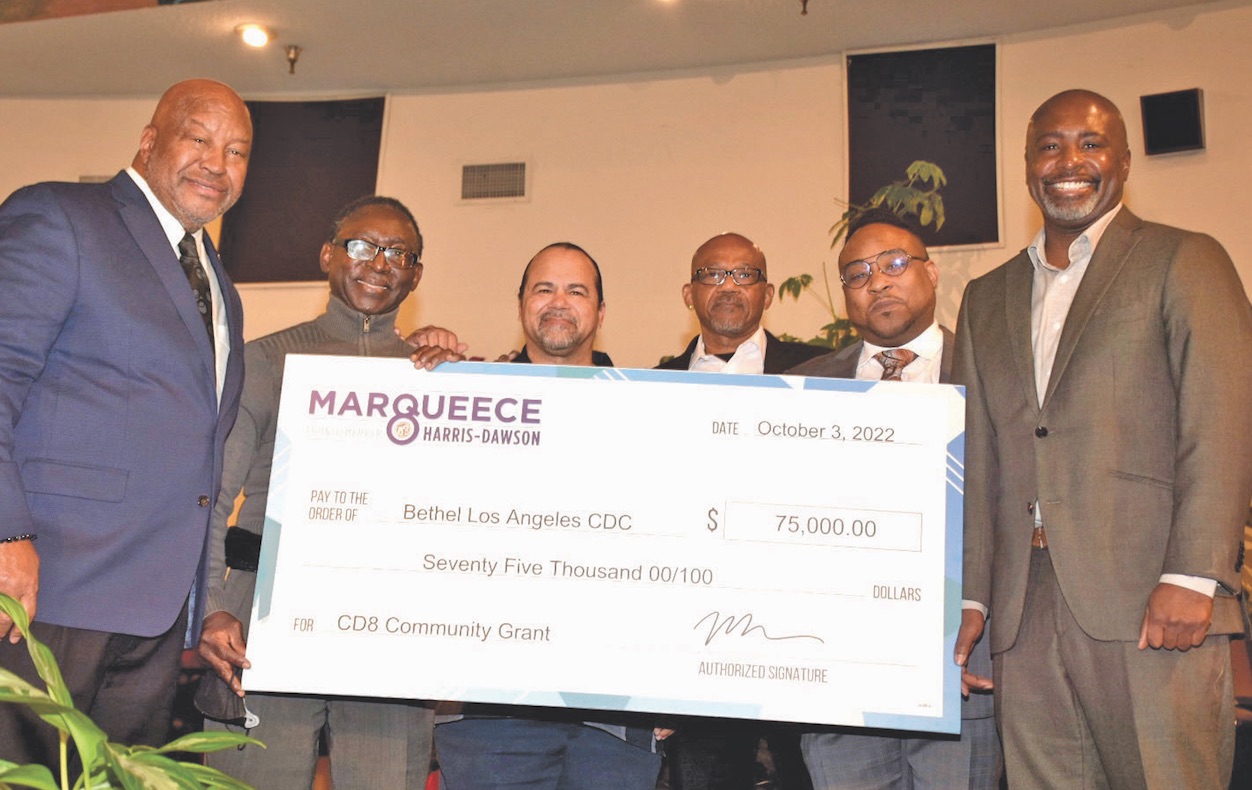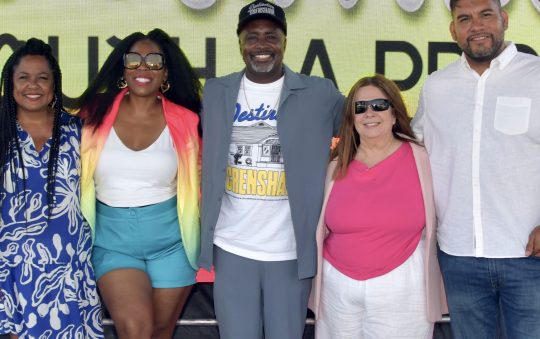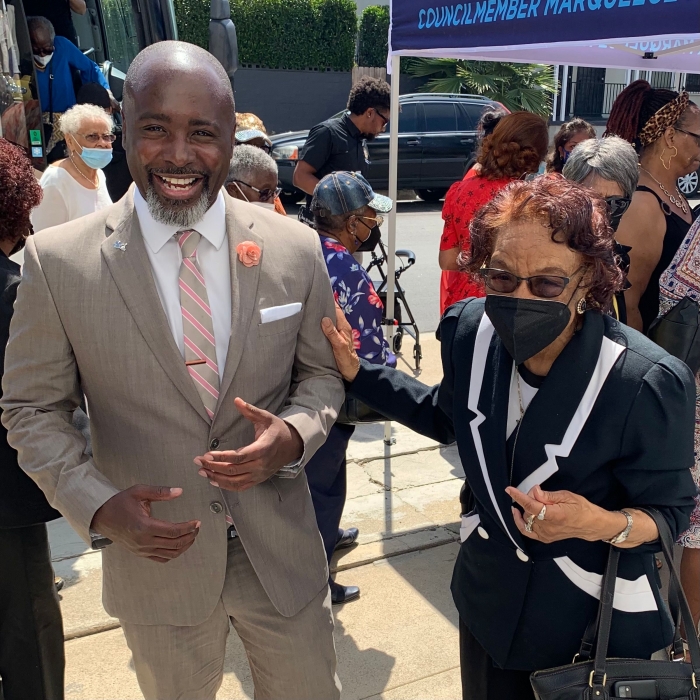
The people of South Los Angeles have been impacted by three years of crisis: a pandemic that tested every system designed to protect us, police brutality we haven’t seen since the 1960s and an economic upheaval that evoked the long food lines of the 1930s.
For many of us, the chaos began four years earlier with the Trump administration. Our systems buckled to the point of breaking. We sent our working-class neighbors to work in grocery stores and as caretakers without financial or physical protection.
What our national culture deemed as “essential” was, in fact, expendable. Collectively, these years left us with a sense of betrayal and vulnerability, and for those of us in the Eighth District, a sense of uncertainty. The lesson learned, “We do not rise to the level of our goals. We fall to the level of our systems.”
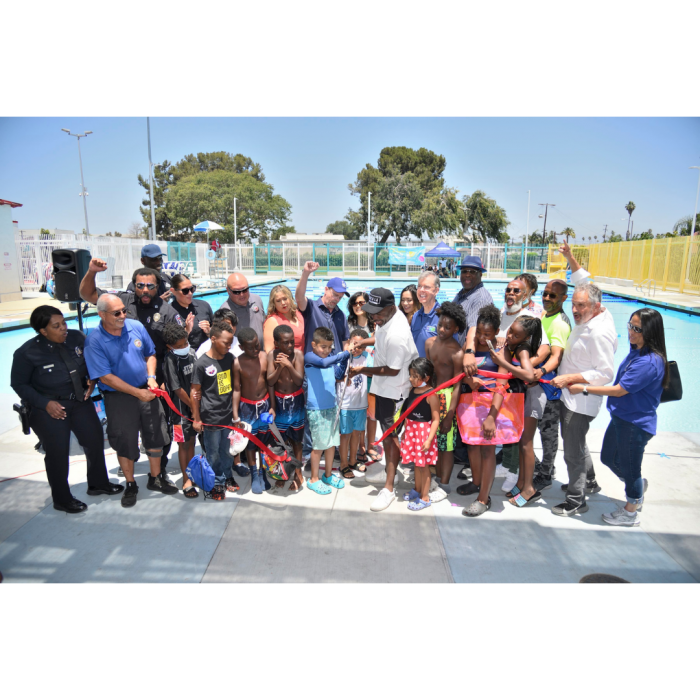
Every action we take is a vote for what we want our community to become. Our vision is both inspirational and aspirational. For the close-knit community of South Los Angeles, the desire to make everything better for everyone — not just ourselves — is at the core of our demands from city departments and the people we elect to serve.
My team and I took action and continued working throughout the stay-at-home orders to address these new concerns and the system failures that have plagued us for generations. We implemented community-based goals around housing, public safety, rebuilding our social networks, and improving our streetscapes as we acclimated to the realities of the pandemic. The result of this work can be seen across the Eighth District.
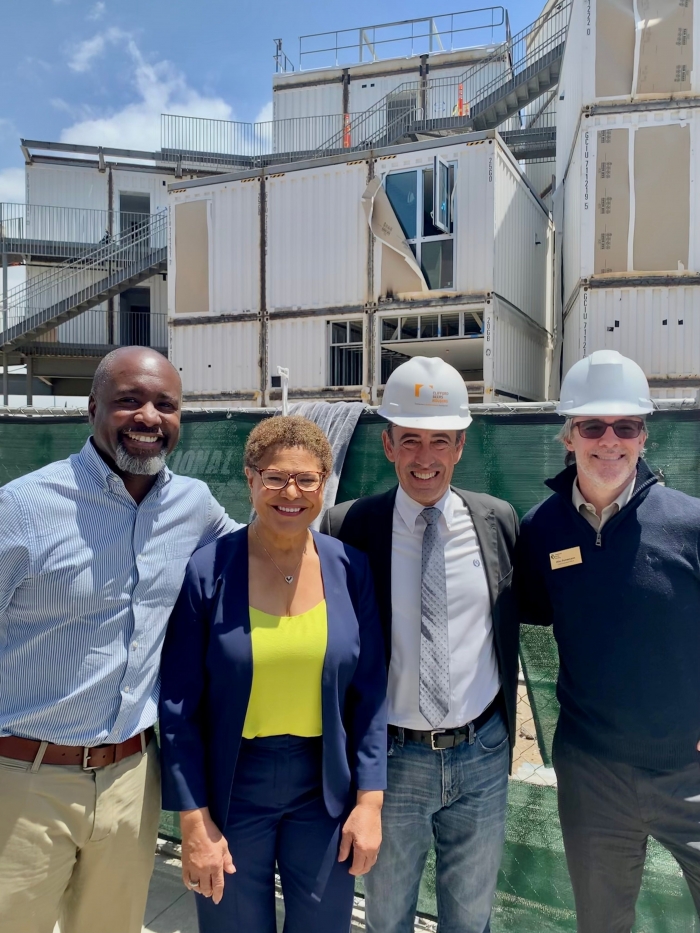
Our Senior Meals program kept thousands of seniors fed and hundreds of South L.A. businesses afloat during the pandemic. In addition, while preparing for the lifting of the quarantine, we were able to open two new swimming pools and facilities at Algin Sutton and Van Ness Recreation Centers. These neighborhoods hadn’t had a pool in 20 years — a generation robbed of a necessary life skill, a family activity and memories.
We continued our work on homeless housing, Chesterfield Square, a permanent supportive housing development for seniors, will receive its first residents in August. Three additional homeless housing developments will come online by the end of the year — providing shelter for hundreds of families, seniors, and veterans.
Our office diverted funds from LAPD (Reimagine funds) that were deployed in two major programs. Basic Income Guaranteed: Los Angeles Economic Assistance Pilot (Big-LEAP) is a $3.2 million pilot program that empowers families with $1,000 per month for a year to make financial decisions for themselves.
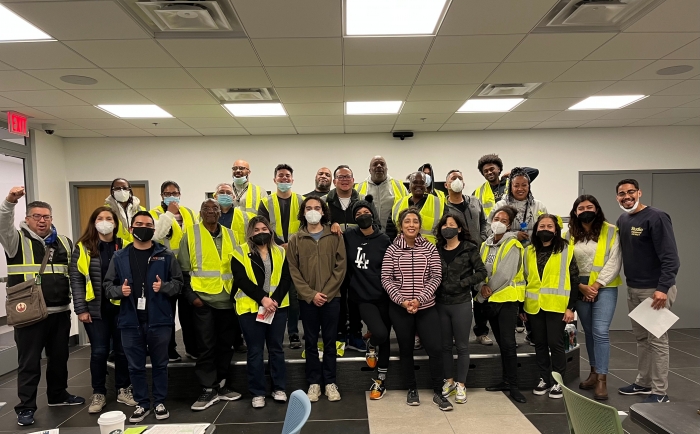
My team and I established a $4.2 million community grants initiative to expand and continue the work of our service organizations that provide:
- Youth development programming
- Domestic violence intervention
- Access to mental health care
- Arts programming
- Community-driven public safety
- And community clean-ups
So far, we’ve supported 14 organizations throughout the district with nearly $1 million of direct funding.
Dialogue-building is key to how we represent and advocate for the improvements in our community and ensure every voice is heard. My team directly engaged hundreds of people, business owners, renters, and homeowners, to address our infrastructure concerns. Items such as street lights, water pipes, electrical systems, medians, and sidewalks along our main streets are in a state of disrepair and at odds with our well-kept residential areas.
Through Western Our Way (WOW), a project along Western Avenue between Martin Luther King Boulevard and Century Boulevard, traffic will slow down to mitigate car accidents along this high injury network.
The Manchester/Broadway project area spans seven blocks, east to west along Manchester Avenue and 33 blocks along South Broadway. It includes improvements to sidewalks, new bus benches and planters, upgrades to the medians, and street lighting.
In March, we broke ground on the Rail to River project, which runs 8.3 miles alongside Slauson. It will provide dedicated walking and cycling paths and connections to communities, schools, and Metro transportation hubs. These infrastructure projects address decades of disinvestment and total $235 million of investment in our neighborhoods.
My office strives to be attentive and dynamic in responding to community concerns. During the last year, in partnership with 311 and Los Angeles Community Corps, we responded to 17,289 calls regarding bulky item removals, 5,291 illegal dumping calls, and 3,783 graffiti removal calls.
The streets we share must be clean and safe. For the past five years, Council District Eight has had one of the highest 311 reporting rates in the city — underscoring the need for equitable services and residents’ commitment to creating the neighborhood they deserve.
Last summer, as we began to gradually come out of our homes, my staff and I made it possible for neighbors to come together again in safe spaces. There were day camp opportunities for our youth in every park in the district, offering, gardening, dance classes, sports, art, and yoga.
This summer, we will bring back our family-friendly programming with Movies in the Park, the annual Jazz Festival at St. Andrews Park, and we are adding a swim party as well. For families to feel comfortable participating in these activities, we’ve invested in community safety programming, including safe passages, community safety partnerships, community intervention workers doing outreach to intervene before trouble starts, and additional sanitation clean-ups.
The neighborliness of the diverse cultures which make up this district instructs us to “look out for each other,” and we do. Being together at events like these strengthen the fabric of our community.
As a resident of South L.A., I know we want to live near our families and friends, close to our jobs, with affordable rent or mortgage payments. So, we insist that our main boulevards reflect the same care we take with the streets and avenues we call home. When things break, we want reasonably fast response times, trash to be picked up and sidewalks safe enough for our children and grandmothers to walk.
We are a community imbued with pride and steeped in activism. We fight to preserve the history of South Central Los Angeles, and for our future, we fight for the equity in services we deserve. We are so proud to call this place home, we shout out its street names on our shirts and hoodies. We are capitalizing on this moment of uncertainty and turning it into a moment of opportunity. We are South L.A. Strong.





